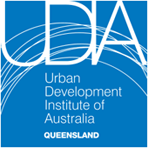1. Cut the immigration intake
It’s a rather obvious solution and is entirely logical. Yes, housing affordability is a demand and supply game. If you cut demand relative to supply, affordability will likely improve.
Sadly, some sections of the political left will use this idea as a weapon to attack the right by playing the race card. Others argue that with fewer migrants there will be fewer builders and a long term issue of fewer workers to support retirees. Well maybe, but who says the requirement is to cut the immigration intake forever?!
2. Encourage the growth of regional townships
Of course, this solution can't be implemented overnight, but it's a vital one if we are to keep sustainably growing our population and if we are to lower our economic dependence on the coastal capital cities, which can only be a good thing.
One of the primary reasons behind the US’s historic economic prosperity has been the prosperity of its inland towns. For those interested in reading how the US became economically successful, you will find this read most interesting.
By encouraging further regional township development, there would be a greater incentive for the populace to move into these towns and take advantage of lower house prices and a lower cost of living. Fortunately, there has been some movement already. May it continue through tax cuts and other subsidies. Regional areas in northern Australia are already benefiting.
3. Cut stamp duties for all and introduce broad-based land tax
This is such a no-brainer but it would be very difficult for the state governments to give up those juicy stamp duty receipts. Yet by removing stamp duties and introducing a broad-based land tax, it would make existing property owners far more mobile and help ensure easier entry and re-entry into the property market.
State governments would also have far more stable, predictable revenue streams instead of the boom-bust cyclical nature of their revenue now. Perhaps during the next housing downturn, state governments just might be “convinced” of this argument.
4. Reduce the break-even point to build a dwelling
The taxation and duties burden to those building a home in Australia is massive.Consider this paper from the Housing Industry Association written in 2011. The total tax burden was estimated at $268,000 for a house in Sydney, $184,000 for a house in Melbourne and $191,000 for a house in Brisbane. These costs no doubt have risen since that time. All of it is being passed onto the home buyer.
While nothing in the affordability debate is simple, reducing the break-even point for building a home should encourage greater supply relative to demand. The trick, of course, would be to ensure developers passed on the cost savings to buyers!
5. Phase out negative gearing
By phasing out negative gearing, so that is only offered only on new property over a longer period of time, this would improve affordability. Yes, back in the last election, we were on balance, against Labor’s policy. This was largely on the grounds that given the short phase in period proposed by the Labor party, this would create a potentially destructive boom/bust wave in the market. Our view is the phasing out period should be longer, about four years, to avoid this impact.
So, there you have it. We are not infavour of any solutions that effectively stimulate housing demand, such as cutting stamp duty for first home buyers and using superannuation to buy a property. Especially the superannuation solution.
Sorry to say, but I think that this is a really dumb idea as it means home buyers could end up putting all of their retirement savings into one asset class, which would be devastating for the country if we were to have a property crash. Besides, affordability would end up being worse as all that super money would just drive prices further up.
No! The answer must be focussed on addressing the supply side while not stimulating demand. It is the only way.
By Louis Christopher Managing Director of SQM Research
Source: SQM Research Newsletter - Tuesday, 7 March 2017
Tags: Housing, Negative Gearing, Stamp Duty


